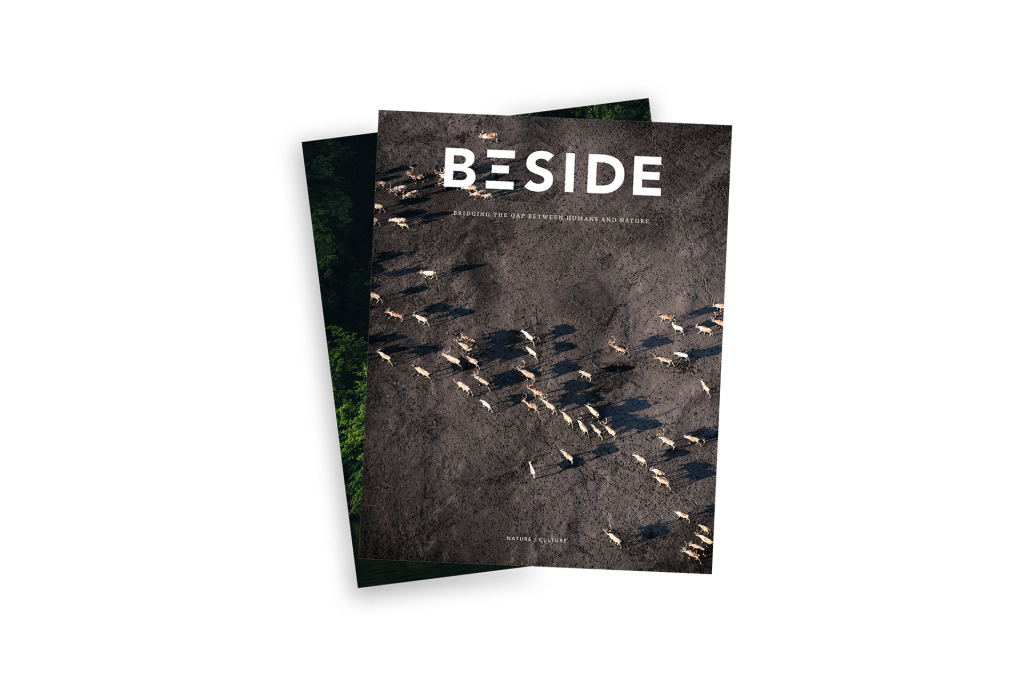Atelier
A Beginner’s Guide to Fly-Fishing
Some handy advice for novice fishermen who wish to take the plunge.
Text Daviel Lazure Vieira
Photos Hooké
Fly-fishing is all about passion, according to Fred Campbell from Hooké. But it also requires a great deal of patience: “You’ll need some quiet time to enjoy the richness of the experience. It’s an ancestral tradition.” If you want to make a splash, follow these basic tips from Hooké and you’ll be sure to pass the test to become a seasoned angler with flying colours.
The catch
Fred’s favourite types of fish and the best spots to practice your fly casting strokes.
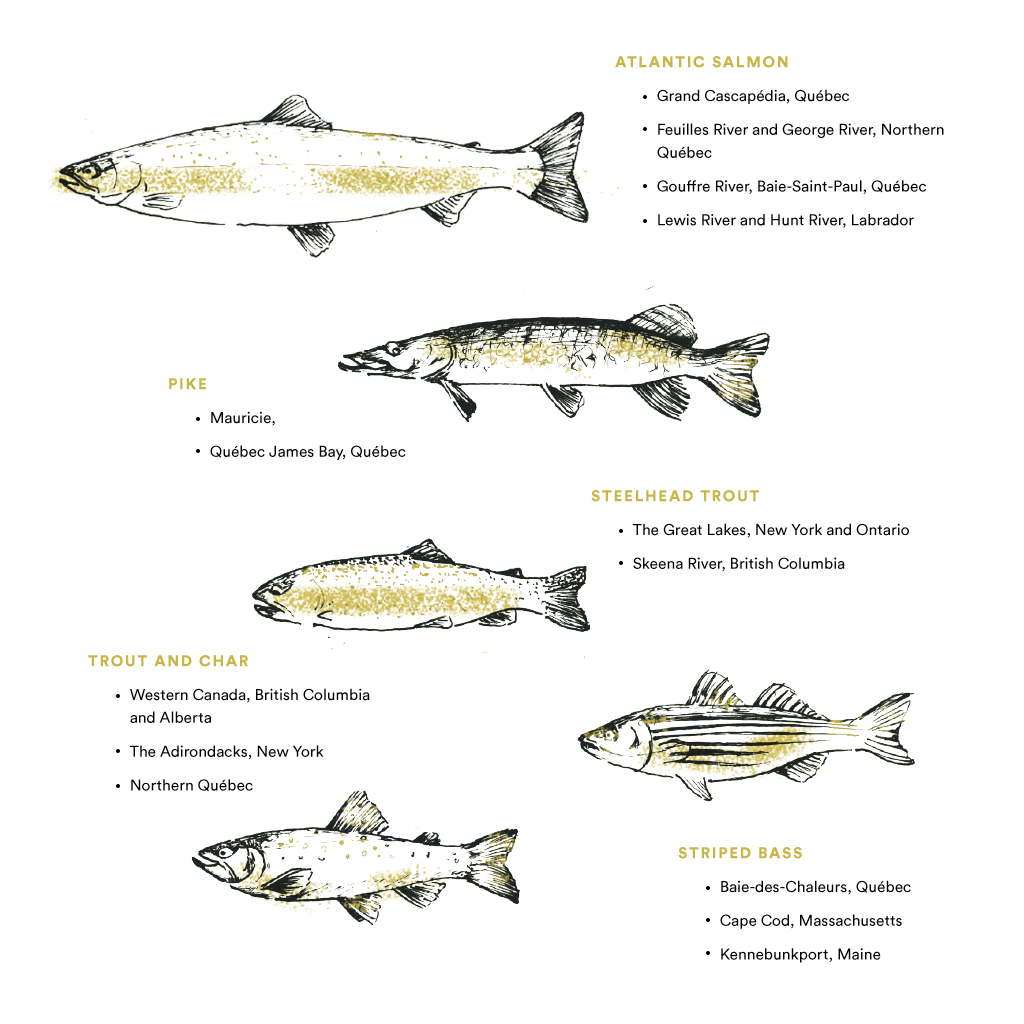
Ethical catch-and-release
Instead of using your hands, try a rubber net with knot-free meshes in order to avoid harming the fish’s skin and eyes. Be careful when you’re manipulating the beast: Don’t over-tighten the caudal peduncle (tail) or insert your fingers into the fish’s gills, as this could weaken the fish’s breathing system. A few seconds of air exposure is acceptable, depending on water temperature—that should give you just enough time to snap a photo before releasing the fish back into the water.

- Rod
- Reel
- Fly line
- Backing and leader
- Fly
How to cast
Although it is preferable to learn how to cast with an expert, the newbie can manage alone by remembering these important steps.

Place your thumb above the handle and hold more or less firmly. Start with a short, six-meter long line. When casting, the bulk of the work is done when your progressive acceleration is followed by an abrupt stop at a one o’clock position. Don’t forget to pause so that the line can be deployed properly, and be mindful of how you manipulate the rod—your wrist should only be some 15 inches away from the rod tip.
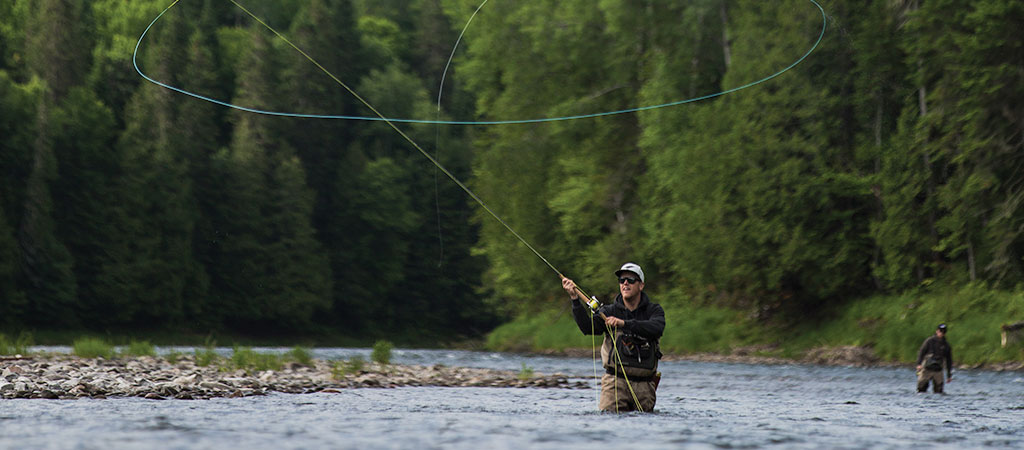
A golden rule (sort of)
When catching Atlantic salmon with other fisher-men, you must follow the rotation. The latest newcomer must go upstream, before the preceding fisher. If the fish nibbles, the fisher may cast a few more times, and even switch flies for a second try. When the fish bites, all other fishermen must remove their flies. No matter if the fish is ultimately caught or lost, the angler must then change position and move upcurrent at the start of the rotation. It’s not as much a rule as it is just plain good ol’ manners: make sure you pay attention to local customs and adapt yourself to the way fishers do it wherever you are fishing.
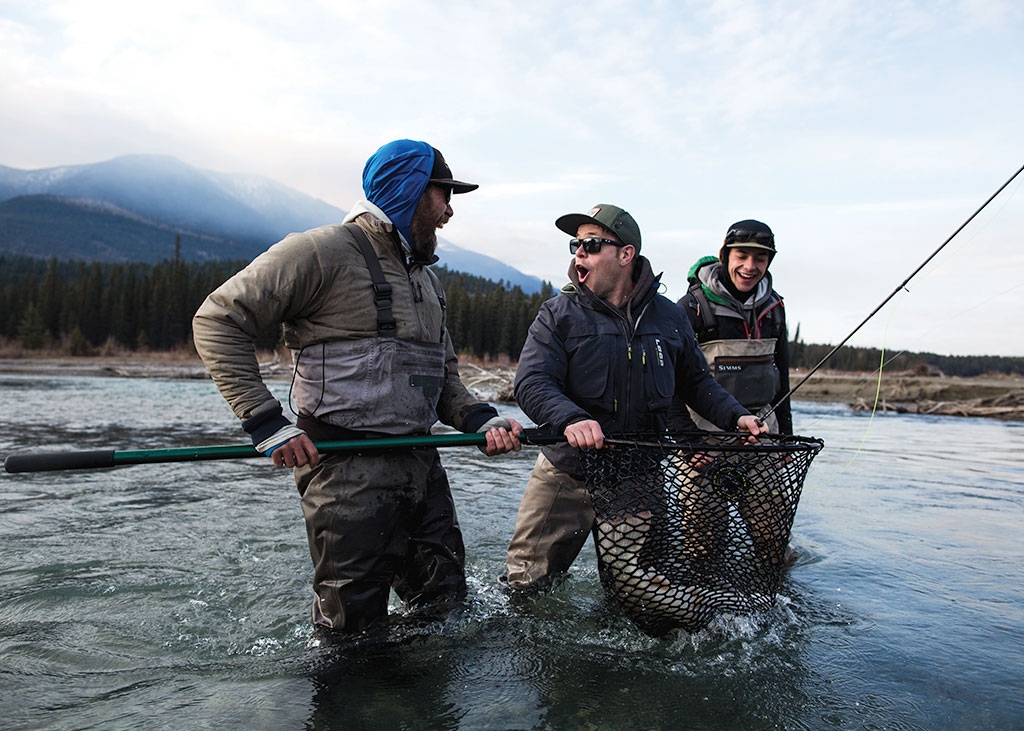
The Improved Clinch Knot
Fly-fishing Knot by Colter co.
Tying on a fly is the most frequent set-up change you will make while fly-fishing. The Improved Clinch Knot, as implied by the name, is an improved version of the knot your grandpa probably taught you when you were six years old. The improvement happens by feeding the end back through the larger loop, making the knot less prone to slipping. Always wet your knots before cinching them tight to improve their strength.
Fly high
There are hundreds of different flies out there, and an equally dazzling number of techniques. Choos-ing the size, colour, and model of your fly depends on fishing conditions: you’ll want a dark fly when it’s cloudy, a brighter one when it’s sunny. To begin with, consider acquiring both dark and bright dry flies (one of each) and five wet flies in a large array of sizes. It’s also important to know a few key terms related to their usage. Wet flies work under the surface of the water. To have the best chance to succeed, the wet fly must reach a certain speed in order to draw the predator’s attention. A slow fly will generate little interest, while a rapid one will seem unconvincing. When using the swinging technique, casting depends on the strength of the current. For slow currents, let the stream accelerate the speed of the line; fly and cast at a 90˚ angle. For fast currents, decelerate the fly’s speed with a closer angle (30˚ or less). Usually, you cast with an angle of 45˚. If you’re not happy with your angle of attack, you can mend it—that is, by modifying the position of the line on the water immediately after it touches the surface. You mend upriver in order to slow down the fly, or downriver to accelerate it. Nymphs are flies that simulate the aquatic insects at pupal or larval stages of development that bear the same name, which several species of fish feed on, including char and trout. Nymph fishing, especially used for fishing trout, is a technique that involves projecting the nymph upstream and letting it drift along the current, like a natural nymph. A strike or bite indicator can be useful: it’s a small device that indicates when a fish is on the line. Among surface flies, dry flies are designed to imitate a flying insect or a recently hatched mayfly (a short-lived insect) floating on top of the water. Using the dead drifting technique, you must cast repeatedly with short, five-meter drifts of around three to four seconds that should nonetheless seem natural. The stripping technique is particularly effective for predators living in lakes and in the sea. You can use it with poppers, floating flies that imitate injured prey on the surface of the water. You work the fly on the surface by performing a series of short, erratic pulls. You can also use this technique with streamers, a type of fly used to mimic a small bait fish that can be cast underwater. Finally, the skating technique can be used with a dry fly cast at a 45˚ angle, which then drifts along the surface of the water by skating, describing a “V” shape that mimics a prey struggling to cross the river.
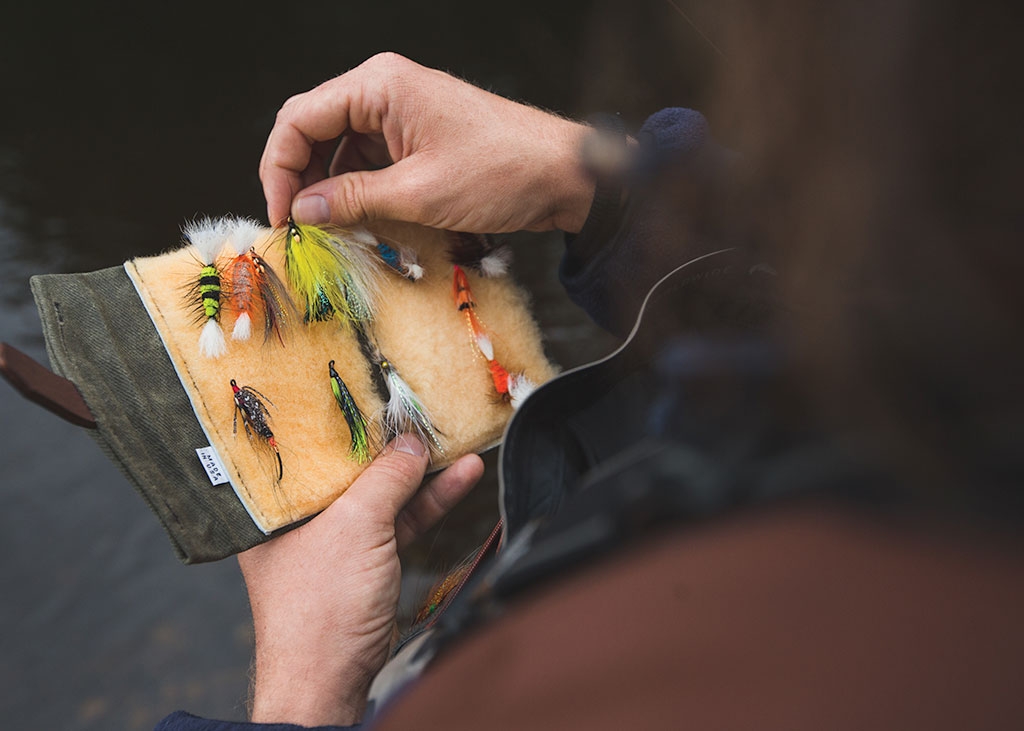
Removing the barb
For easy hook removal, simply pinch the barb with pliers. This simple and efficient catch-and-release trick allows you to quickly extract the hook, while keeping fish handling time to a minimum and decreasing the risk of damage.
